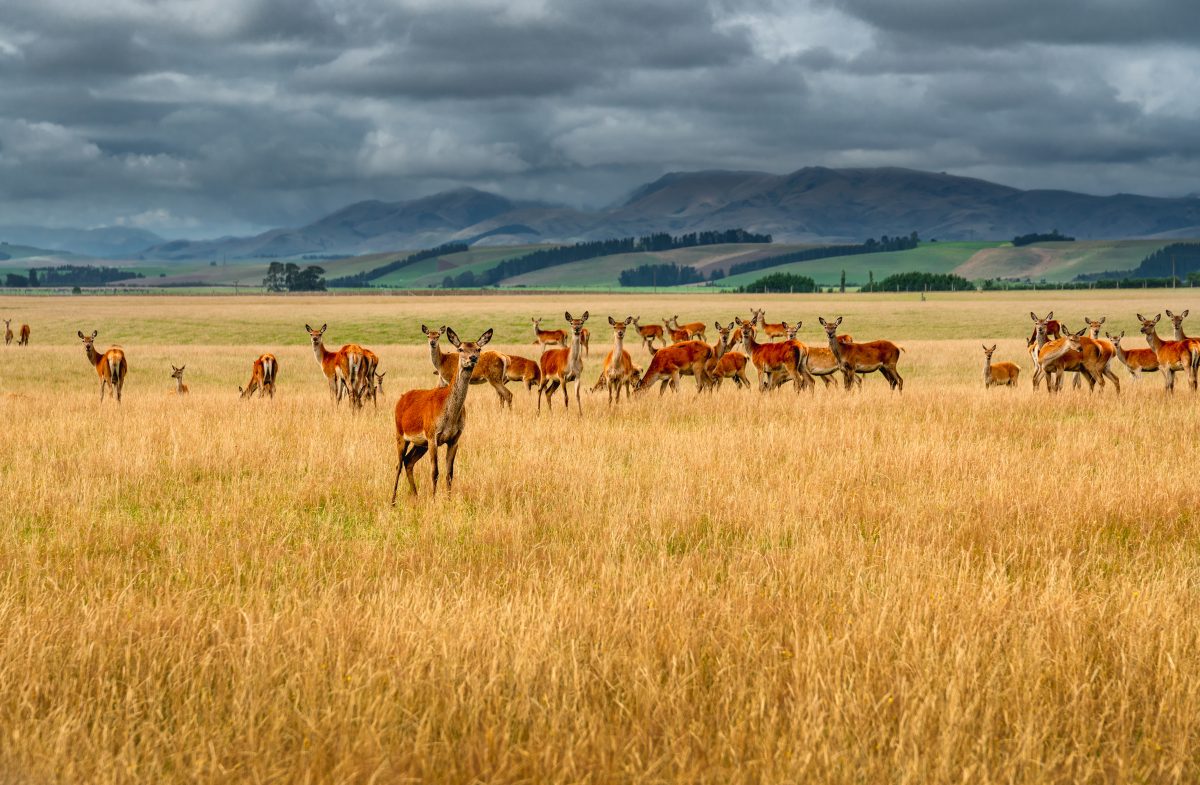 Abbey Dowd, the recipient of the 2022 NZIAHS Lincoln University Leading Student Award, embarked on her Honours study throughout the final year of her Bachelor of Agricultural science degree. Her honours dissertation is titled
Abbey Dowd, the recipient of the 2022 NZIAHS Lincoln University Leading Student Award, embarked on her Honours study throughout the final year of her Bachelor of Agricultural science degree. Her honours dissertation is titled
The study involved taking samples of red deer milk in mid- and late-lactation and analysing them in the Lincoln University labs. Abbey worked in close partnership with Professor Jon Hickford, driven by her passion for both the deer and dairy industry and a desire to complete research in a relatively unknown field.
As a new industry, little is known about how deer milk composition may change and vary throughout seasons and within herds, Abbey says. Her study aimed to characterise the fatty acid (FA) profile of red deer milk from hinds grazing lucerne.
New Zealand deer milk is already winning awards as a niche food product. Further investigation into the FA profiles of deer milk, including study of deer grazing different pastures and early lactation studies, would provide further insight and allow confirmation of her study’s findings.
An Investigation of Red Deer Milk in New Zealand and the Implications for Future Production
Throughout the final year of my Bachelor of Agricultural Science degree at Lincoln University I embarked on my Honours study. This study involved taking samples of red deer milk in mid- and late-lactation and analysing them in the Lincoln University labs. I worked in close partnership with Professor Jon Hickford who was an excellent mentor and sounding board throughout my time at Lincoln. My Honours dissertations was titled “An Investigation of Red Deer Milk in New Zealand and the Implications for Future Production”. The drive behind pursuing this subject was a combination of my passion for both the deer and dairy industry as well as a desire to complete research in a relatively unknown and untouched field.
As a new industry, little is known about deer milk composition, let alone how this may change and vary throughout seasons and within herds. My study aimed to characterise the fatty acid (FA) profile of red deer milk from hinds grazing lucerne. Milk samples were collected and analysed using FAME evaluation to determine the FA profiles of individual deer. These were then compared through mid- and late-lactation, as well as a comparison to FA profiles of dairy cows in New Zealand.
Large variations in FA proportions were observed between deer and the proportion of dietarily desirable FAs such as conjugated linoleic acid (CLA) within the sampled population. This suggests that future selection for deer with desirable fatty acid profiles may be possible, but the practicality of doing this within an evolving industry may be challenging. All of the deer milk FA proportions measured differed significantly between mid- and late-lactation. The changes observed tended to be opposite to that typically seen for cows’ milk in New Zealand, and it is suggested that the changes may be due to increased fat content and changes in energy balance towards the end of lactation observed in cervid species.
The skewed distribution of essential fatty acids suggested a ‘baseline physiological limit’. This may be due to the lesser extent of domestication of the species and the requirements of the neonate. When the deer FA profiles were compared to cows’ milk, many differences were observed. Deer milk had higher proportions of short-chain fatty acids SCFAs, lower proportions of long-chain fatty acids (LCFAs) and higher proportions of polyunsaturated fatty acids (PUFAs) relative to cows’ milk. Deer milk also had higher proportions of the omega-3 FA group and reduced proportions of conjugated linoleic acid (CLA) compared to cow’s milk. Using some of these findings to our advantage, deer milk could be marketed as a ‘healthy product’ containing higher levels of omega-3 relative to other animal milks.
From the above information, it can then be concluded that deer milk could succeed as a niche product. Further investigation into the FA profiles of deer milk, including study of deer grazing different pastures and early lactation studies, would provide further insight and allow confirmation of the present study’s findings.












